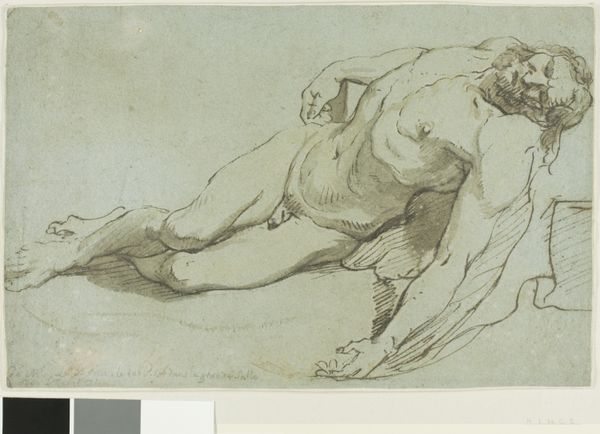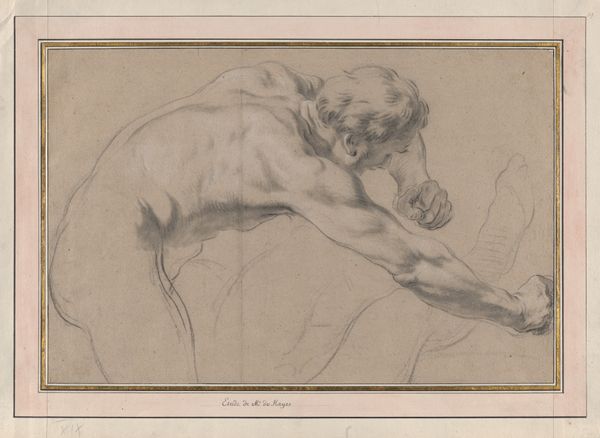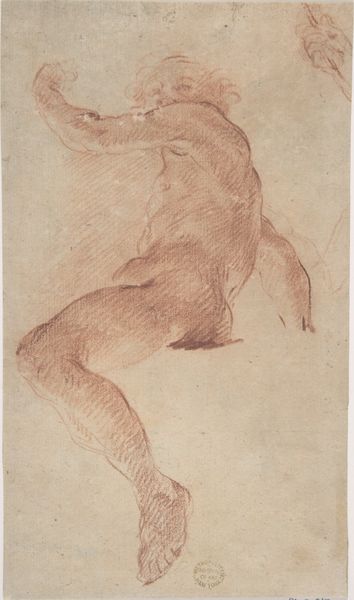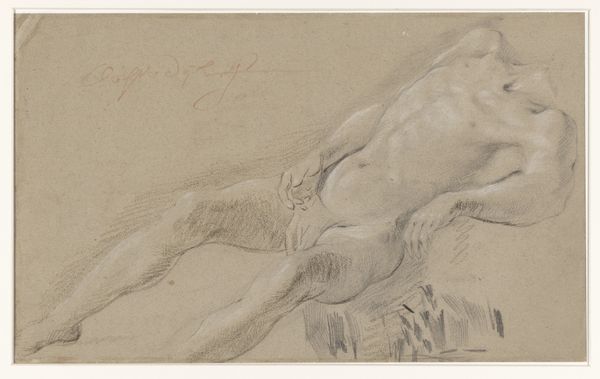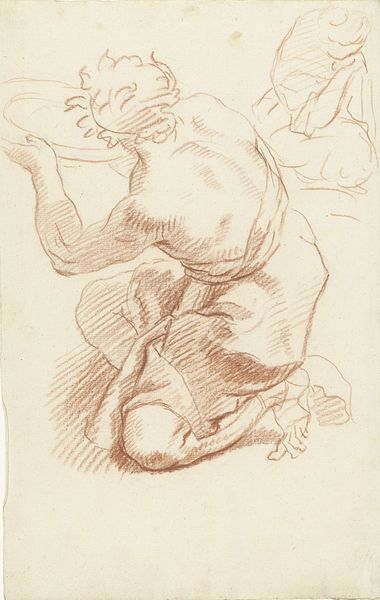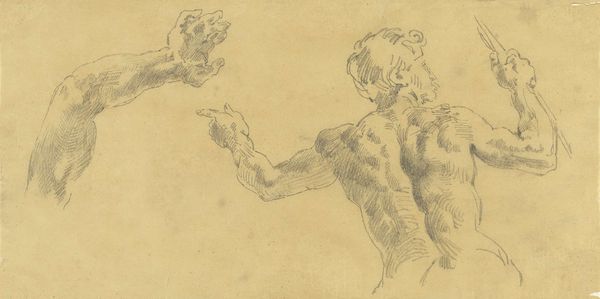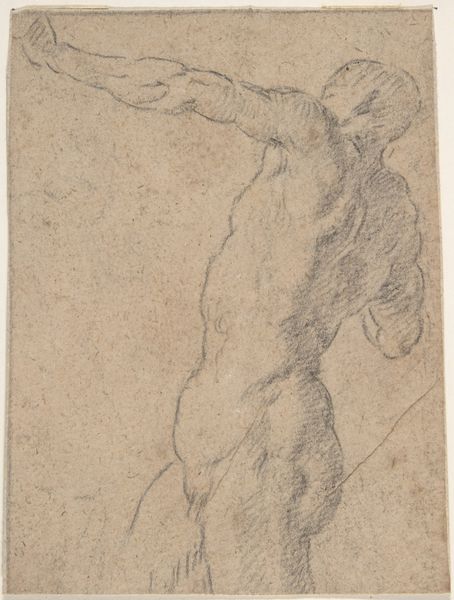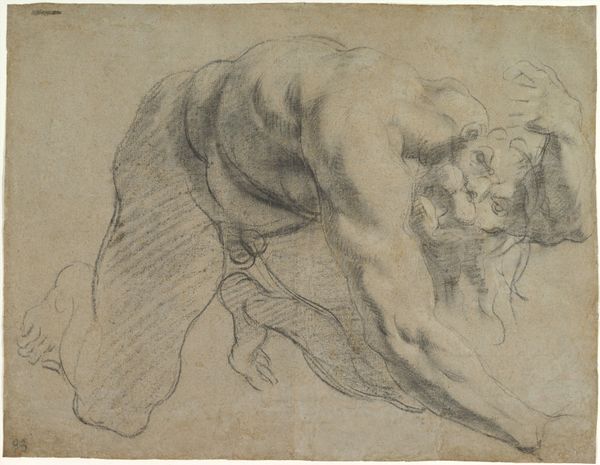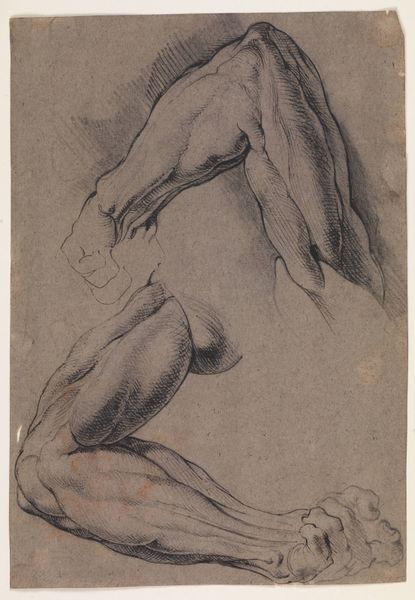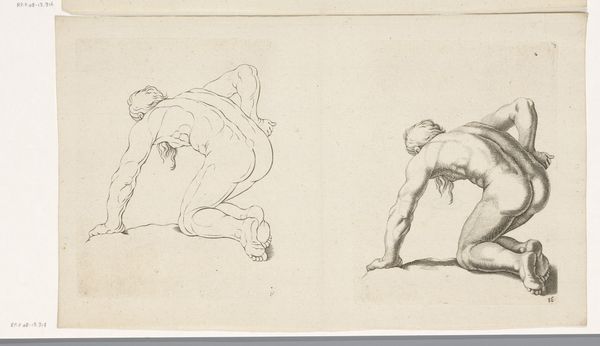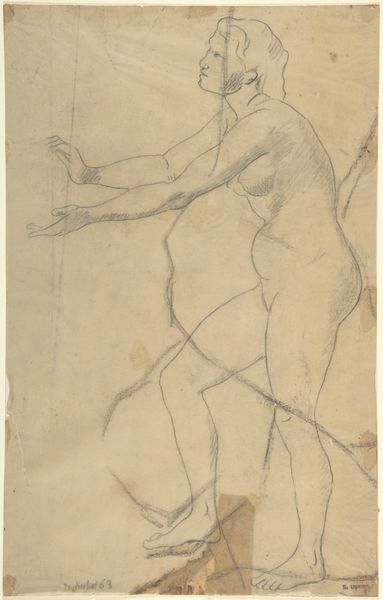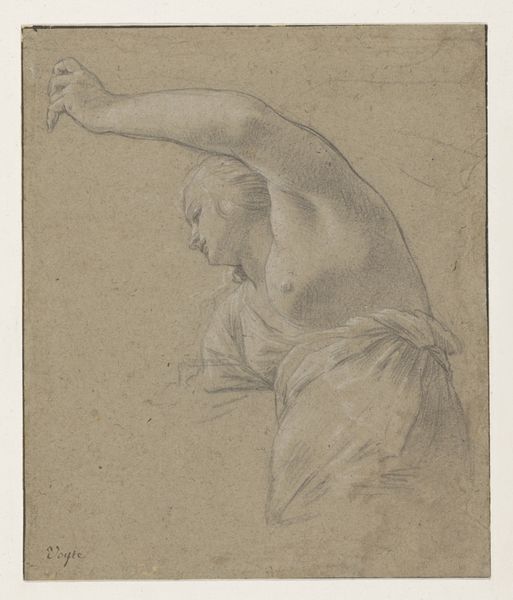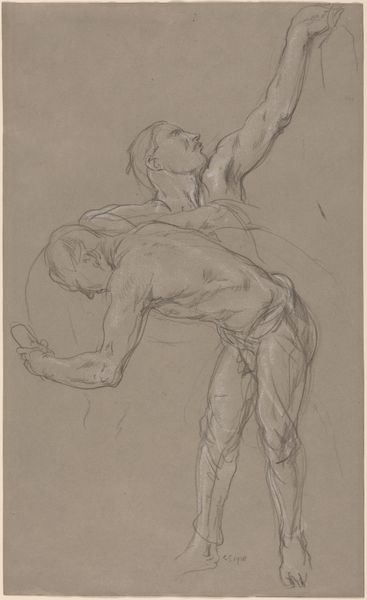
Double-sided Sheet of Figural Studies: (recto) Study of a Nude Man in an Action Pose Seen from the Side and in Three-quarter Length; (verso) Study of Christ in the Baptism, Standing in a Frontal View. 1700 - 1767
0:00
0:00
drawing, print, pencil
#
pencil drawn
#
drawing
# print
#
pencil sketch
#
figuration
#
pencil
#
academic-art
#
nude
Dimensions: Sheet: 16 15/16 × 10 5/8 in. (43 × 27 cm)
Copyright: Public Domain
Editor: So, this is a double-sided sheet of figural studies by Giacomo Zoboli, made sometime between 1700 and 1767. The museum tells me it’s pencil on paper, with sketches on both sides, one of a nude man and the other of Christ's baptism. The figure study, particularly, feels quite charged, with all this tension and dynamism in the pose. What do you see in this work? Curator: The pose itself carries so much weight. That slumped posture, head bowed, hand outstretched...it speaks volumes, doesn’t it? The nude figure on the front seems burdened, perhaps even defeated. The very nature of a ‘study’ invites us to think about what those symbols may communicate, divorced from a greater narrative. And flipped onto the verso we see the study for Christ at baptism! Editor: That’s quite a contrast, a figure wrestling, almost grieving, and then Christ during such a transformative event, being baptized. How do they connect? Curator: Consider the historical and spiritual context: baptism as a symbolic death and rebirth. It’s possible Zoboli explored a raw, human struggle – the ‘death’ of the old self, mirrored in the figure study - as a necessary prelude to spiritual renewal. Look at how the light catches them similarly, creating volume and presence. Is it possible both embody suffering or initiation? What does that tell us? Editor: Wow, I hadn't thought of them as related at all, let alone two sides of the same coin, almost! It's fascinating how seemingly disparate images can be linked through symbolic interpretation. Curator: Precisely. This isn’t just about anatomical correctness, it’s about understanding humanity's emotional and spiritual struggles that great artists, across periods, tried to address through symbolic form. A double sided sheet, two states, as evidence of Zoboli’s process. Editor: Well, this really changes how I look at not only this sheet, but also preparatory sketches in general. Curator: Hopefully it opens up an understanding of artistic process in the eighteenth century.
Comments
No comments
Be the first to comment and join the conversation on the ultimate creative platform.
